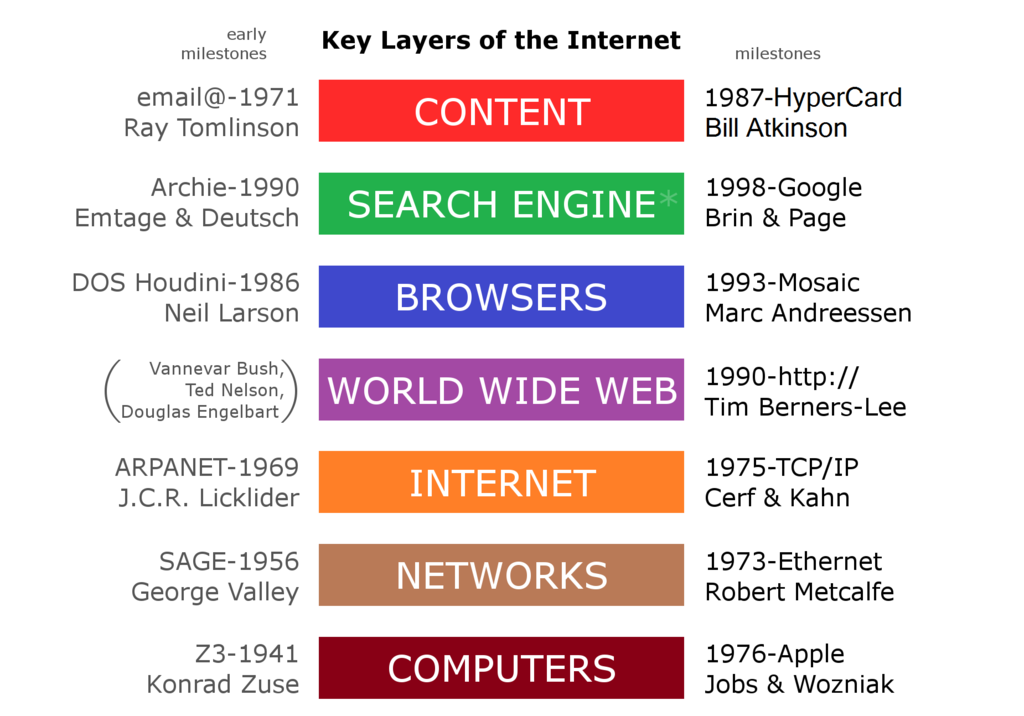Introduction

The World Wide Web (WWW) is an information system in which documents and other web resources are identified by Uniform Resource Locators (URLs) and are accessible via the Internet. In 1990, Sir Timothy Berners-Lee created the first web browser.
The Web is not synonymous with the Internet, which predates the Web in some form by more than two decades and is built on the same technologies as the Web. A website is made up of multiple web resources that share a common theme and, in most cases, a common domain name. Websites are stored on computers that run a web server, which responds to Web requests made by web browsers on a user’s computer.
A publisher can provide website content, or it can be generated interactively from user-generated content. Web resources can be any type of downloaded media, but web pages are hypertext documents formatted in HTML (Hyper Text Markup Language).
Early history behind the World Wide Web

(A NEXT Workstation used by Tim and other CERN researchers)

(Image of Sir Tim Berners-Lee)
The underlying concept of hypertext was developed in previous projects dating back to the 1960s, such as Brown University’s Hypertext Editing System (HES). By the second half of the 1980s, Tim Berners-vision Lee’s of a global hyperlinked information system had become a reality. Such a system could be referred to by one of the existing definitions of the term hypertext, which he claims was coined in the 1950s.
There is no reason why such hypertext links could not include multimedia documents such as graphics, speech, and video, according to the proposal, which is why Berners-Lee uses the term hypermedia. In 1988, the first direct IP connection between Europe and North America was established, and two years later, in 1989, the first global Internet connection was established.
In 1989, he submitted to CERN management a memorandum titled “Information Management: A Proposal for a system called “Mesh.”
On November 12, 1990, Robert Cailliau proposed the term “WorldWideWeb.” HTML and HTTP had been in development for about two months at this point.
The proposal estimated that a read-only web would be created in three months and that “creation of new links and new material by readers” would take six months. While the read-only goal was achieved, accessible authorship of web content took longer to mature, with the wiki concept in place, WebDAV, blogs and Web 2.0 technologies such as RSS/Atom became part of the web later on enabling user-generated content later paving the way for social networks and the modern web.
By Christmas 1990, Tim Berners-Lee had created all of the tools required for a functioning Web, including the first browser and web server. On December 20, 1990, the first website, which described the project itself, was launched. Tim Berners Lee used a NeXT Computer to create the world’s first web servers to create first web browser.
On August 6, 1991, Tim Berners-Lee posted a brief summary of the World Wide Web project to the newsgroup alt.hypertext. This date is occasionally confused with the public availability of the first servers, which occurred months earlier.
Historians agree that a turning point for the Web began with the 1993 introduction of Mosaic. Mosaic’s graphical user interface allowed the Web to become by far the most popular protocol on the Internet. The World Wide Web Consortium (W3C) was founded by Tim Berners-Lee after he left the European Organization for Nuclear Research (CERN) in October 1994.
By the end of 1994, the total number of websites was still relatively small, but many notable websites were already active and later web portals started to gain traction which helped to foreshadow and inspired today’s most popular online services. This motivated international standards development for protocols and Formatting Formatting. The Web enabled the spread of information over the Internet through an easy-to-use and flexible format.
Layers of the World Wide Web
The below graphic covers the key layers behind the web which allow for it to work and provide the functionality in modern applications which much of the world uses.

Technical standards
Web standards are not fixed sets of rules, but are a constantly evolving set of finalized technical specifications of web technologies. Web standards are developed by standards organizations such as the W3C, not by individuals or companies. Considerations include the interoperability, accessibility and usability of web pages and web sites.
Some web standards govern aspects of the Internet, not just the World Wide Web. Even when not web-focused, standards directly or indirectly affect the development and administration of web sites and web services.
It is crucial to distinguish those specifications that are under development from the ones that already reached the final development status (in case of W3C specifications, the highest maturity level). The Unicode Standard and various Unicode Technical Reports (UTRs) are examples of such specifications.
Conclusion
We hope you found this page to be insightful and helpful, if so please share it and consider following us to keep updated with new content.
AGR Technology is a business founded in regional Victoria, Australia and helps businesses with a range of solutions such as Website Design, Software Development and Online Marketing.
Also be sure to check out our blog, software, tools and videos for more.
Other relevant links from our IT glossary:
IaaS (Infrastructure-As-A-Service)
HTML (Hyper Text Markup Language)
Citation(s):
Victorgrigas, CC BY-SA 3.0 https://creativecommons.org/licenses/by-sa/3.0, via Wikimedia Commons
(2001). World Wide Web [Online]. Wikipedia. Available at: en.wikipedia.org/wiki/World_Wide_Web (Accessed: 28 May 2021).
Concord hioz, CC BY-SA 4.0 https://creativecommons.org/licenses/by-sa/4.0, via Wikimedia Commons
Geni, CC BY-SA 4.0 https://creativecommons.org/licenses/by-sa/4.0, via Wikimedia Commons
Paul Clarke, CC BY-SA 4.0 https://creativecommons.org/licenses/by-sa/4.0, via Wikimedia Commons
![logo-new-23[1] logo-new-23[1]](https://agrtech.com.au/wp-content/uploads/elementor/thumbs/logo-new-231-qad2sqbr9f0wlvza81xod18hkirbk9apc0elfhpco4.png)